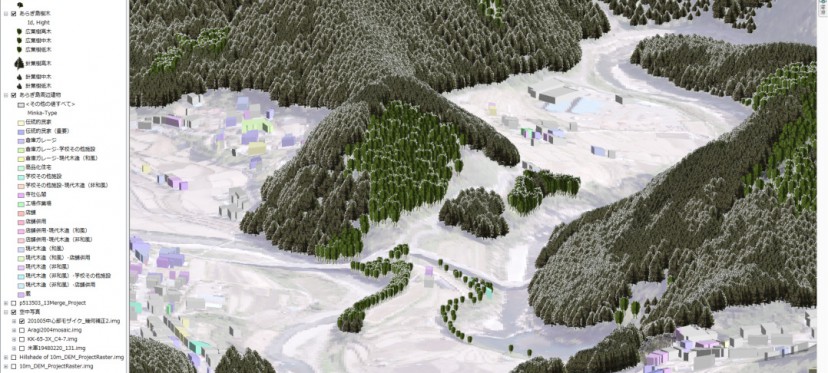Aragijima cultural landscape preservation



I had been involved in the committee on Aragijima cultural landscape preservation. Below is a summary of the landscape values identified by our survey (submitted to Agency for Cultural Affairs).
1. The highly distinctive rural mountainous landscape formed by the interaction of humans and nature has been maintained.
This mainly mountainous region, and its distinctive river-terrace topography formed by the flows of the Arida River (which meanders through the mountains), constitute the foundation for occupational activities suited to local natural conditions. These were farming and forestry, in addition to the side occupation of papermaking, which took advantage of a water environment providing high-quality and plentiful water from mountain streams, springs, the river, and other sources, and local climatic conditions which tend to be foggy and therefore suited to growing paper mulberry trees. The result is a strongly integrated and continuous rural landscape formed along the lines of the natural topography, and even now the traditional land use of this cultural landscape, which consists mainly of Aragijima, persists to the present.
2. A Diverse Ecosystem Is Preserved in an Integrated Rural Mountainous Environment.
This region is surrounded by steep mountains and its cultural landscape is mostly mountainous. The considerable expanse of terraced rice paddies has created an environment comprising meadows and areas of short-stemmed plants; in addition, the stone masonry and earthen embankments built to make the terraced paddies has created an environment where diverse flora and fauna (including rare species) live and grow, and which is the foundation for ecosystem preservation and biodiversity.
3. An Historically Multilayered Landscape Remains.
This region’s cultural landscape is the sum total of elements including a rural mountainous landscape whose origins are in Ategawa Manor, a famous manor development of the Middle Ages; the rural mountainous landscape originating in the series of development projects by Satayu Kasamatsu in near modern times, specifically the development of long-distance irrigation channels and new rice paddies, including Aragijima, and the establishment of papermaking settlements; hydropower facilities built owing to the rising demand for electric power in modern times; and the landscape of repeated reconstruction as people came to terms with many natural disasters from the start of recorded history, including the great flood of 1953. Although diverse tangible elements, inevitably formed in each historical era, are overlaid upon one another, together they become a coherent and highly integrated landscape that continues down to the present.
4. Traditional Water-Use Practices and Customs Strongly Persist.
The terraced rice paddy irrigation channels, which are a primary constituent element of this cultural landscape, are an important element that indicates the occupational history of this region. In particular, the development process and time period of the Uwayu irrigation channel can be pinned down from historical sources. Additionally, the tado, or traditional water-use associations, the irrigation system, paddy-to-paddy irrigation, and other traditional water-use practices have passed these irrigation channels down to the present day. This region also has many traditional events and customs that include religious functions and annual events. These intangible elements have preserved the local community, and constitute a basic element that has shaped the people’s livelihoods and landscape.
5. An Easily Recognizable Environment Enabling One to View the Entirety of the Mountain Village Landscape.
This cultural landscape consists mainly of Aragijima and has a fixed viewpoint field. Because Aragijima is a small and cohesive terraced-paddy landscape with a distinctive fan shape, it is a landscape that enables people to recognize, remember, and objectify the whole of the terraced paddy group as a unified form. The said landscape is not merely the terraced-paddy landscape of Aragijima, because its surroundings and background include all the elements of rural mountain villages in the same field of view. This makes the environment a readily enjoyable one where people can view the mountain village landscape in its entirety along with its diverse backdrop, akin to a bird’s-eye view of a mountain village as a whole.
Here is KMZ constructed by this lab.
I would like to further develop this research by comparison to other national and international terrace paddy landscapes…